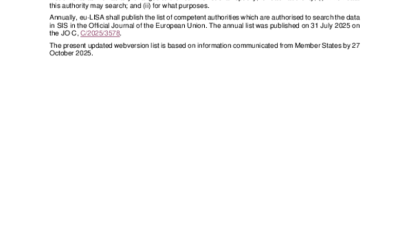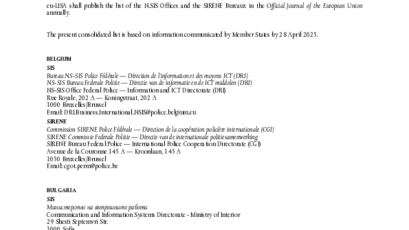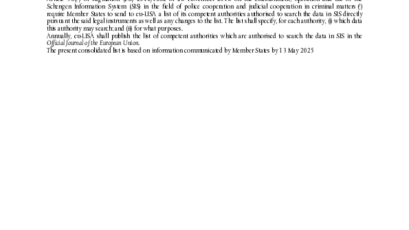Actions

On 19 November 2018, the European Council adopted the Commission's proposal to strengthen the Schengen Information System (SIS), Europe's most widely used information sharing system for migration, security and border management.
eu-LISA will be in charge of the technical upgrade of the SIS.
The reinforced SIS will include, among others, the following upgrades:
- New alerts on criminals and return decisions: The agreed changes will allow SIS alerts to be issued for unknown persons who are wanted in connection with a crime. In addition, a new alert category for "return decisions" will be introduced to improve the enforcement of return decisions issued to irregularly-staying third-country nationals;
- Greater vigilance for terrorist offences: National authorities will be obliged to create a SIS alert in cases related to terrorist offences and a new “inquiry check” to gather essential information;
- Stronger provisions on missing children and people in need: National authorities will be able to issue preventive alerts on persons who are in need of protection, in addition to existing alerts on missing persons;
- Enforcement of entry bans: It will be now compulsory to insert into SIS any entry bans issued to third-country nationals allowing their enforcement throughout the Schengen area;
- Stronger data protection rules: The agreed changes will strengthen the protection of personal data, by bringing it into line with the new General Data Protection Regulation and the Police Directive on data protection;
- Improved interoperability: The reinforced SIS will make more efficient use of fingerprints, palm prints and facial images to identify suspects. The upgrades are also geared towards ensuring full interoperability of the SIS with other EU systems for migration, border management and security;
- Enhanced access for EU Agencies: Europol will now have access to all alert categories in the SIS while European Border and Coast Guard Agency operational teams will be able to access SIS for the purpose of carrying out their tasks in the hotspots and at external borders.
Next steps
The President of the European Parliament and the Austrian Presidency of the Council will need to co-sign the texts, which will then be published in the Official Journal of the European Union and enter into force twenty days later. The new functionalities in the SIS will be implemented in a phased manner, with a requirement for the system to be fully operational in Member States 3 years following entry into force of the legislation (i.e. 2021).


